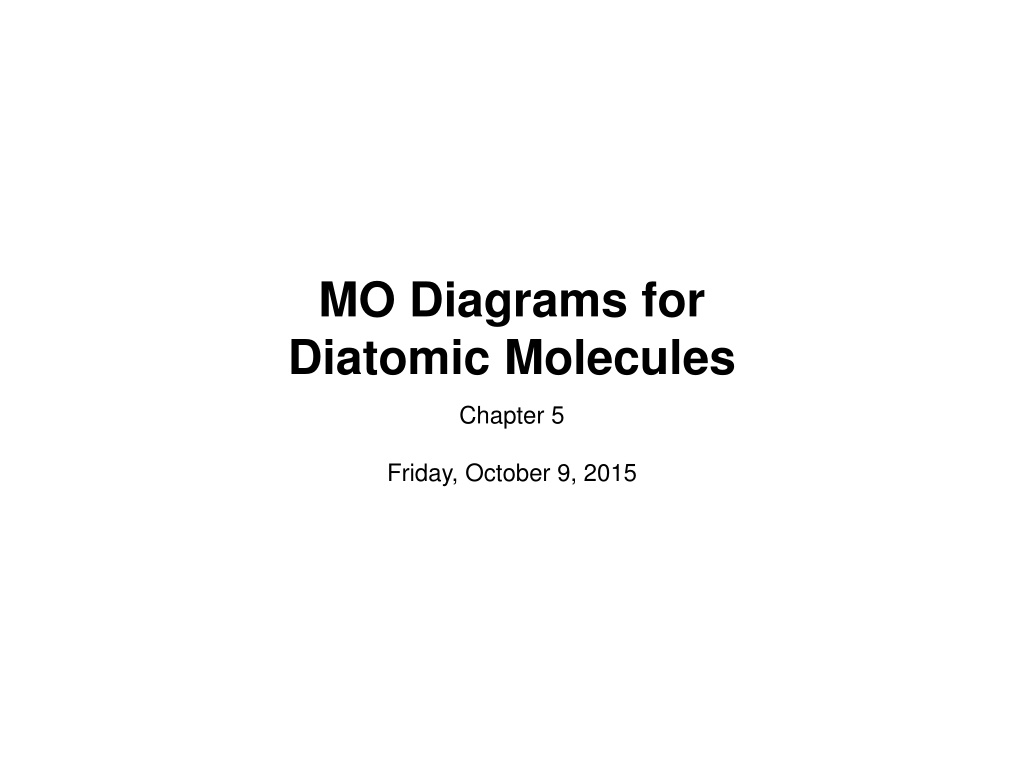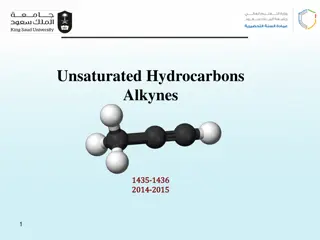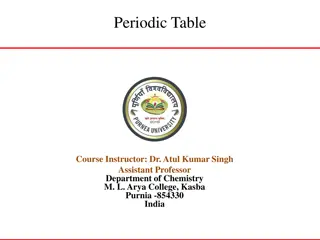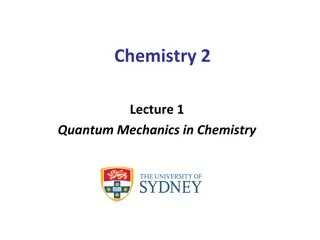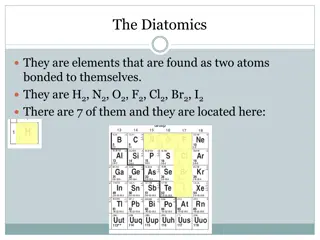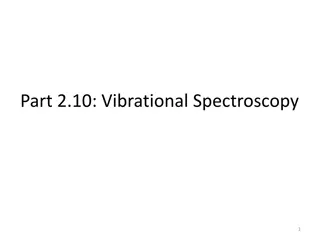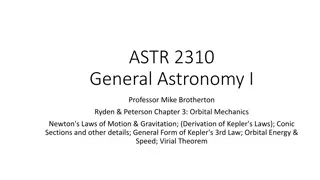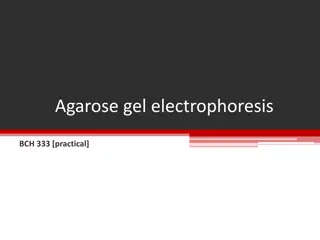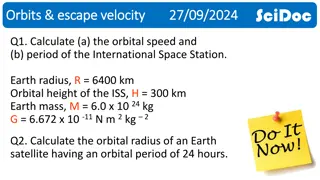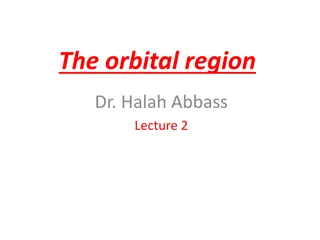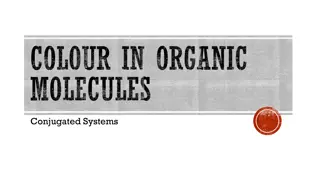Understanding Molecular Orbital Diagrams for Diatomic Molecules
Explore the intricacies of MO diagrams for diatomic molecules like O2, delving into electron configurations, bond orders, and orbital mixing effects. Discover how MO theory offers a more accurate depiction of molecular structures compared to traditional Lewis dot structures.
Uploaded on Sep 14, 2024 | 0 Views
Download Presentation

Please find below an Image/Link to download the presentation.
The content on the website is provided AS IS for your information and personal use only. It may not be sold, licensed, or shared on other websites without obtaining consent from the author. Download presentation by click this link. If you encounter any issues during the download, it is possible that the publisher has removed the file from their server.
E N D
Presentation Transcript
MO Diagrams for Diatomic Molecules Chapter 5 Friday, October 9, 2015
Homonuclear Diatomic Molecules What happens when we move to more complicated systems? Consider O2. The Lewis dot structure famously predicts the wrong electronic structure for O2 We can use LCAO-MO theory to get a better picture: Notice that E > E , because the bonds have more overlap than bonds E E 2pa 2pb 2sa 2sb
Electron Configurations and Bond Orders Just as with atoms, we can write a molecular electron configuration for O2 2 *2 2 4 *2 We can also calculate the O O bond order: BO =1 2 =1 2 # bonding e ( ) # anti-bonding e ( ) 8 4 = 2 LCAO MO theory also predicts (correctly) that O2 has two unpaired electrons.
Orbital Mixing Orbitals of similar but unequal energies can interact if they have the same symmetry The 2s and 2pz orbitals form MOs with the same symmetry ( g and u). sp mixing causes the g and u MOs to be pushed apart in energy: The and orbitals change order!
Orbital Mixing The size of the effect depends on the 2s-2p energy difference. order changes small Zeff = small energy difference = large sp mixing large Zeff = large energy difference = small sp mixing
MOs of Homonuclear Diatomic Molecules The MO picture of homonuclear diatomic molecules depends on the amount of sp mixing. O2, F2, Ne2 Li2, Be2, B2, C2, N2
Bond Order and Bond Distance The MO bond order is the main factor controlling the internucelar distance. B2 2 *2 2 BO = 1 F2 2 *2 2 4 *4 BO = 1 O2 2 *2 2 4 *3 BO = 1.5 C2 C22 2 *2 4 BO = 2 2 *2 4 2 BO = 3 O2 2 *2 2 4 *2 BO = 2 N2+ O2+ 2 *2 4 1 BO = 2.5 2 *2 2 4 *1 BO = 2.5 N2 2 *2 4 2 BO = 3
Relative AO Energies for MO Diagrams Photoelectron spectroscopy gives us a pretty good idea of the relative energies for AOs. Al Si B Na P Li C S Mg Cl Be N H 3p Al Ar 13.6 eV O 3s B 2p F Si 18.6 eV 1s P C Ne 2s He S N Cl Ar O F 40.2 eV Ne
MO Diagram for HF The AO energies suggest that the 1s orbital of hydrogen interacts mostly with a 2p orbital of fluorine. The F 2s is nonbonding. * 13.6 eV 1s 18.6 eV nb 2p Energy So H F has one bond and three lone electron pairs on fluorine 40.2 eV 2s nb H H F F
Relative AO Energies for MO Diagrams Photoelectron spectroscopy gives us a pretty good idea of the relative energies for AOs. Al Si B Na P Li C S Mg 10.7 eV Cl Be N H 3p Al Ar O 15.8 eV 3s B 2p F Si 1s P C Ne 19.4 eV 2s He S N Cl Ar O 32.4 eV F Ne
Heteronuclear Diatomic Molecules: CO In molecules with more than one type of atom, MOs are formed from AOs that have different energies. Consider CO: * LUMO is on carbon too! * HOMO is on carbon Energy 2pa 2pb * Anti-bonding orbitals get polarized towards carbon 2sa 2sb Bonding orbitals get polarized towards oxygen C O C O
Summary MO Theory LCAO-MO Theory is a simple method for predicting the approximate electronic structure of molecules. Atomic orbitals must have the proper symmetry and energy to interact and form molecular orbitals. Photoelectron spectroscopy provides useful information on the energies of atomic orbitals. Next we ll see that symmetry will help us treat larger molecules in the LCAO-MO theory framework.
